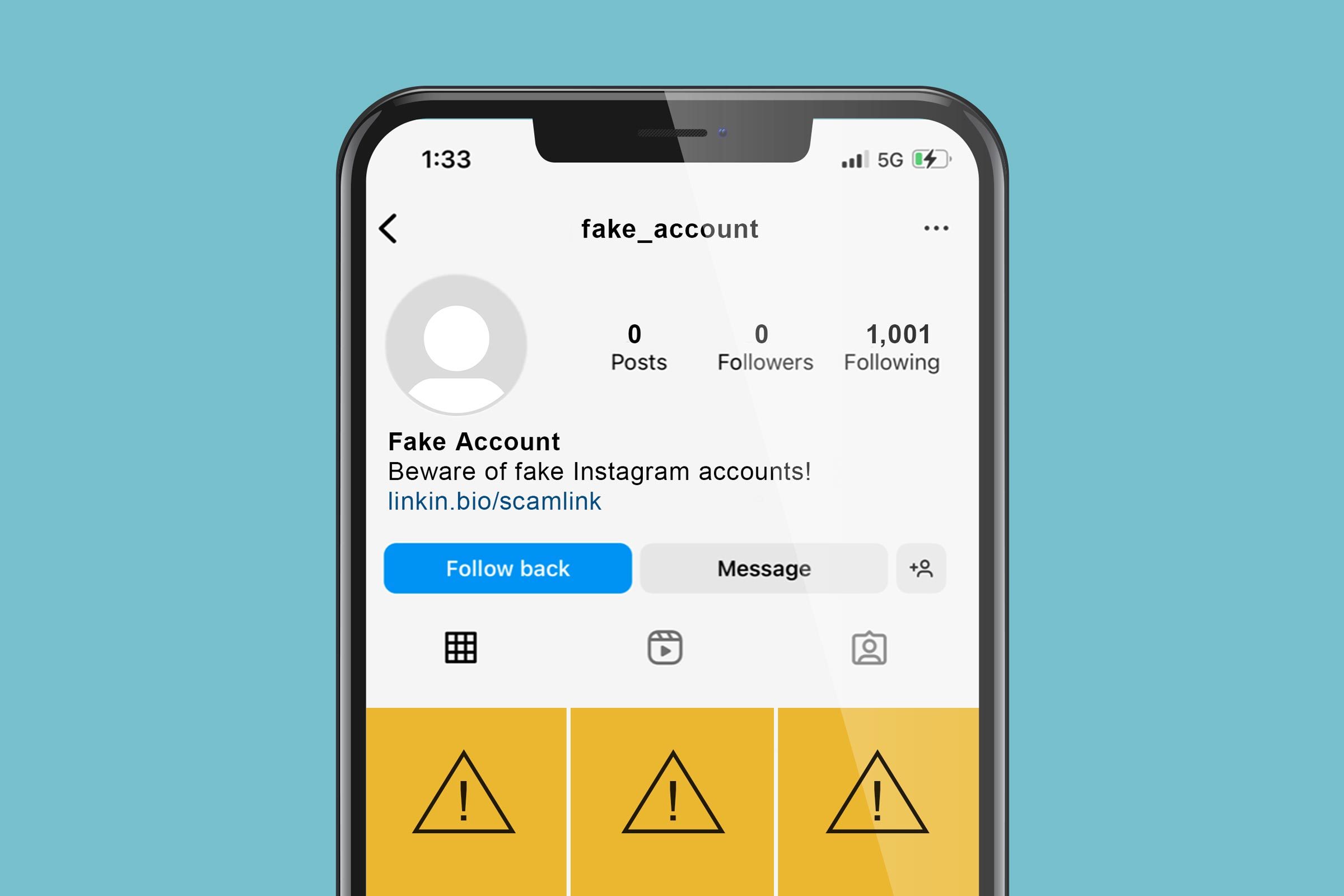
How to Spot a Fake Instagram Account

What are the different types of fake Instagram accounts?
There are a slew of different Instagram scam accounts you may encounter while scrolling through the platform. Here are the most common, and how they operate:
- Bot accounts are run by automated software programs. Bots are often used to inflate follower counts (four in ten influencers have used bots for this purpose, according to Statista), but bad actors use them to manipulate public opinion, influence elections and insert themselves into events around the world.
- Financial scam accounts are created expressly to lure in users with get-rich-quick schemes, counterfeit items and phishing attempts. These could take the form of phony brand accounts, accounts that link to fake shopping sites and others.
- Impersonation accounts (aka catfishers) pose as real people to trick users into sharing sensitive information, or to entice them into a romance in order to steal their money or identity.
While they each have some distinctive red flags, the motivations of the scammers who run them are often similar: to manipulate you, trick you into sending money or get you to share your personal details.
Fake accounts can be hard to spot, but these tips from our experts will help you know exactly what to look out for.
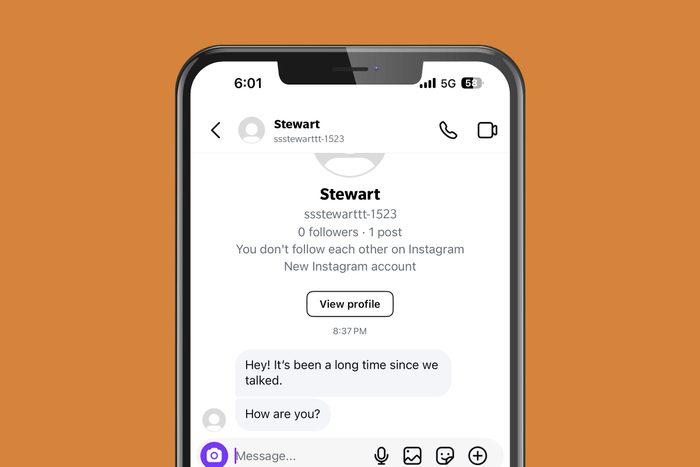
The communication is unsolicited
When you’re trying to figure out if an IG account is fake, you often don’t need an intense investigation. One very simple red flag can tell you that an account is fake immediately: Someone who you do not know is contacting you out of the blue.
“I really encourage people on any platform—Instagram or otherwise—to just ignore unsolicited communications at this point, because they’re such common scam tactics,” says Wilder, who is also the research director for the Association of Certified Fraud Examiners. “First and foremost, ignore any unsolicited message.”

The username doesn’t match
Celebrities use Insta and other social media to connect with fans and keep interest in them and their careers high. But plenty of scammers glom on to celebrity notoriety to gain followers or trick people into sending them money. (Remember, Ryan Reynolds doesn’t need your help with a financial problem.)
Take a closer look at the account’s username. Typically, it will be the name of the person, or a profile name they are known to use on multiple platforms. For example, Ryan Reynolds uses @VancityReynolds across all of his social accounts. Anything else is a sure sign of a fake Instagram account.
Another red flag: It’s just someone’s first and last name plus a long stream of numbers. “That can be a red flag that it’s a bot account,” says Wilder.

The photos are suspect
Photos can be a big clue that an Instagram account is fake.
“I recommend people evaluate the legitimacy of a profile by doing what’s called reverse image searching,” Wilder says. You can do this by right-clicking on the image (or tapping and holding if you’re on your phone), or going to images.google.com. “If an account profile [picture] shows up associated with a bunch of other accounts that have different names, that’s obviously a huge red flag,” says Wilder.
Another sign of a scammer: The person in the profile photo does not appear in the account’s other photos. If you’re still not sure, tap on the tagged photos icon to see if there are any photos of them with family and friends. Typically, on a real account, users have links to other people in real life. If they don’t, it could be a red flag.
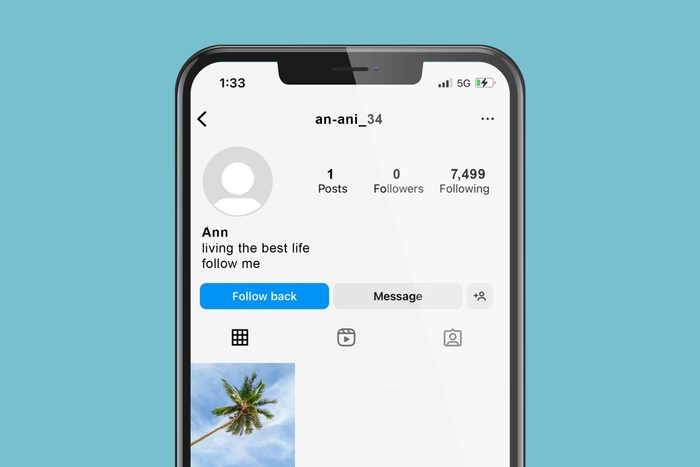
The account has too few or too many followers
Another pro tip: “I look at follower ratios,” says Schober, who is also the author of Hacked Again. “If there’s hundreds of thousands of followers but you only see a couple likes, or very few comments, it’s probably a fake profile.”
Some of the smarter scammers buy fake Instagram followers to beef up their count to look more legit. On the flip side, an account with only a few followers is also a red flag. Again, if it doesn’t have the look and feel of a real account—a normal amount of followers and a normal amount of engagement—it’s probably a fake.
“You need to see some level of genuine interaction when someone posts a photo on Instagram,” Schober says.
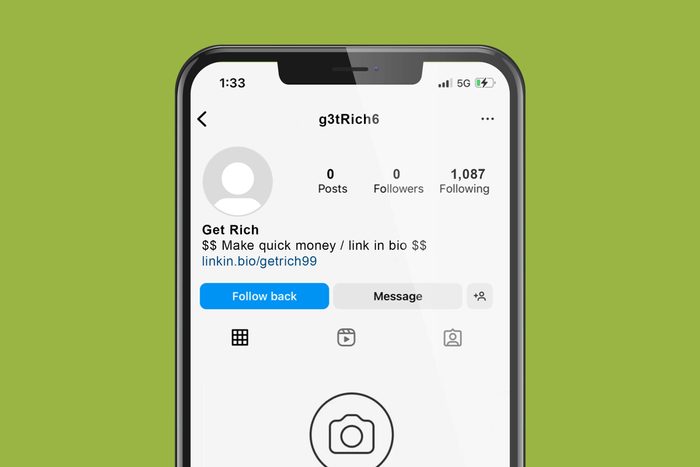
The bio feels off
If a bio gives you a spammy vibe, it’s probably a fake account (and that’s true on Facebook, too). Some things to look for include: asking you to like a different account, strange capitalization or spacing, advertising for investment opportunities, listing just emojis in the bio or not having anything in the bio at all. Generic bios are a big sign of fake Instagram accounts, Wong says.
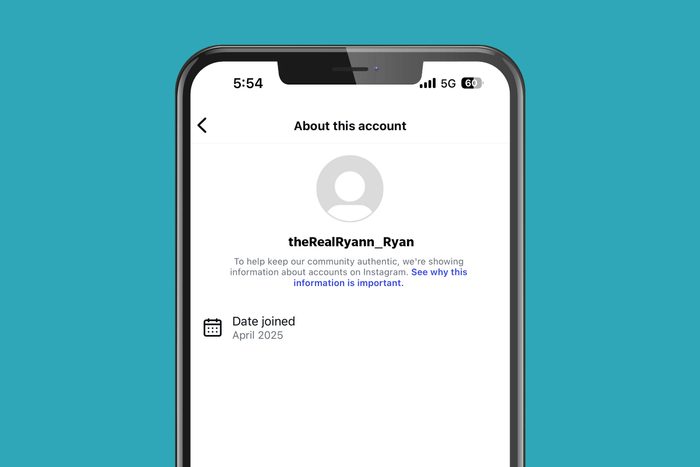
The account has a sketchy history
“One of the ways I can tell an account is fake is there’s a whole bunch of activity” but it’s all within a short period of time, Schober says. “If you go back and look at posting dates and they’re posted all on almost the same date, be suspicious.”
Besides scrolling through an account’s photos, you can also use a lesser-known tool to look into a potential scammer. Tap the three dots in the corner of a profile and click “About this account.” There, you can see how long an account has existed (short lifespan = red flag), as well as whether it’s verified to be a real person or brand. That said, even verified accounts can be hacked, so pay attention to other red flags—like sudden interest from a celeb.

A celebrity slides into your DMs
Sad but true: Real celebrities almost never follow back or DM users unprompted. If they do, it’s likely an impersonator. Unfortunately, with AI-generated images and deepfake voices, it’s easier than ever to fall for a fraudulent celebrity scam.
Johnny Depp and Brad Pitt have both sounded the alarm on these scams, and in one nightmare scenario a woman lost $855,000 due to a yearlong “romance” with someone posing as Pitt. Spotting this scam is pretty easy. One, start from the assumption that a celebrity is not contacting you.
If you still feel uncertain, check to see if the celebrity account is verified. While paid verification makes it harder to rely on this method, no verification definitely means no celebrity.
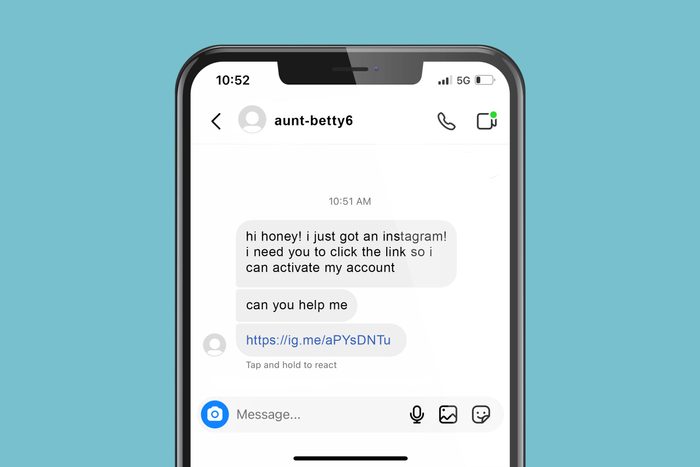
The faker pretends to be a friend
Sometimes, a scammer tries to impersonate not a celebrity but someone you know.
“The first step in identifying a fake Instagram account is to verify the source of information and [the person’s] identity,” says Wong. “Ask yourself: Did a close family member or friend recently join the platform, or make a new account? Or is this a poser? If you’re unsure, reach out via a separate channel to confirm.”
Wong says that social engineering, a psychological tactic used to trick you into giving up personal information, is commonly used by cybercriminals to lower your defenses and exploit your personal information. Examples include sending phishing links, or posing as close family and friends to manipulate you. So do your due diligence before sharing personal details.
“If you receive a direct-message request from anyone requesting your personal or financial information, pick up the phone or send an email to the source to confirm,” advises Wong.

The messages are aggressive
You’ve probably experienced this one. The faker sends you a DM saying they want to get to know you better right now, under the guise of becoming a friend or romantic partner. They may also shower you with over-the-top compliments. These scammers might declare that you are the best-looking person in the world, or even say they love you. These tactics are meant to seem endearing, and sometimes these romance scams work when the DMs land in the inbox of someone who is lonely and feeling vulnerable. Don’t fall for it.
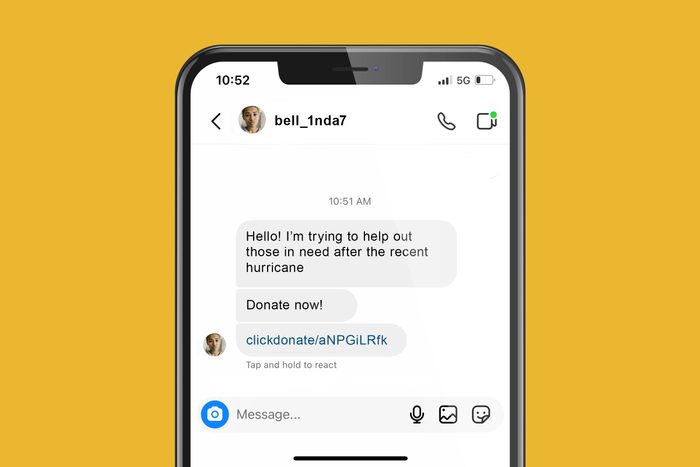
The person makes an urgent request
“Another key aspect to look out for in potential fraudulent accounts or direct messages is the sense of urgency,” Wong says. “Many times, scammers take advantage of breaking news, such as a natural disaster, by posing as a donation or support site.” They may also say they’re a shopping website that “needs personal info and money for shipping purposes,” Wong adds.
They may even pretend to be someone you know, claiming that they’re in jail and need bail, or that they’re stuck on the side of the road and need gas money. Don’t give in to the urgency. Check to make sure the account is real before you take action, and if the person might be someone you know, reach out to them via text.
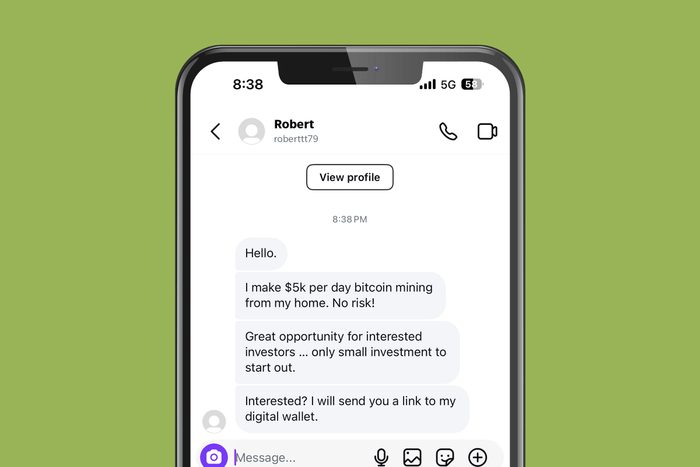
They start talking about cryptocurrency
“One scheme in particular that I know for a fact people use fake Instagram profiles to initiate contact is called pig butchering,” says Wilder. It’s a harsh term, but the gist of it is the scammer wants to “fatten you up” by making promises of a big return on an investment. Of course, the plan is to steal all of your money.
Since many people would be skeptical of sudden requests for money or a wire transfer, this new version encourages someone to invest in a cryptocurrency platform that doesn’t exist. Rather than asking for financial support, the scammer makes it sound as if they’re doing you a favor.
“It’s a totally fictitious platform, but it’s set up very professionally so victims see their initial investment grow over time and start investing more,” Wilder explains. Victims can lose vast sums of money in the process. One of the simplest ways to avoid Instagram scams is to run the moment you see the word “cryptocurrency.”
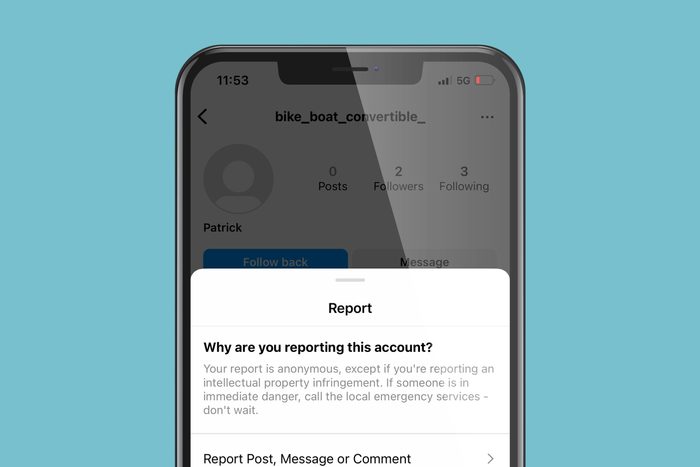
How to report a fake Instagram account
Reporting fake Instagram accounts is an important way to fight back against scammers—not just to protect yourself from financial theft and identity theft, but also to help others. First, report the account to Instagram:
- Go to the profile.
- Tap on the three-dot […] menu icon.
- Tap “Report Account.”
- Follow the instructions on the screen.
- Tap “Submit Report.”
You can also report individual posts:
- Tap the three-dot […] menu icon on the post.
- Tap “Report.”
- Follow the instructions on the screen.
- Tap “Submit Report.”
If someone is impersonating you on Instagram with a fake account, you can report them by filling out this form at the Instagram help center.
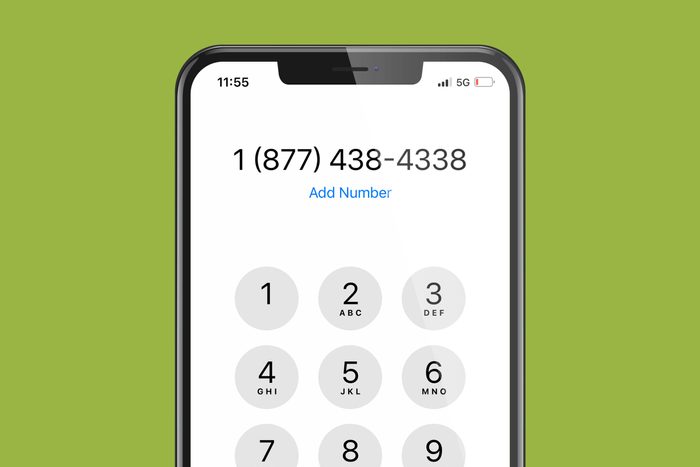
What to do if you’ve been scammed on Instagram
If a scammer steals money from you, or if you suspect a fake Instagram account is trying to steal money or gain personal information, contact your local police department. Cybercrime laws vary from state to state, and the police can direct you to the right venue for your specific situation. Also, file a report with the FBI’s Internet Crime Complaint Center.
If your identity was stolen, contact the Federal Trade Commission (FTC) online at IdentityTheft.gov or by phone at 1-877-438-4338. And don’t wait, because the more time that scammers have your information, the more damage they can do.
If you sent money, immediately report the transaction. The FTC advises that you contact your bank, credit card company, wire transfer company, gift card company or payment app. Report the transaction as fraudulent, and ask them to reverse the charge or provide a refund if possible.
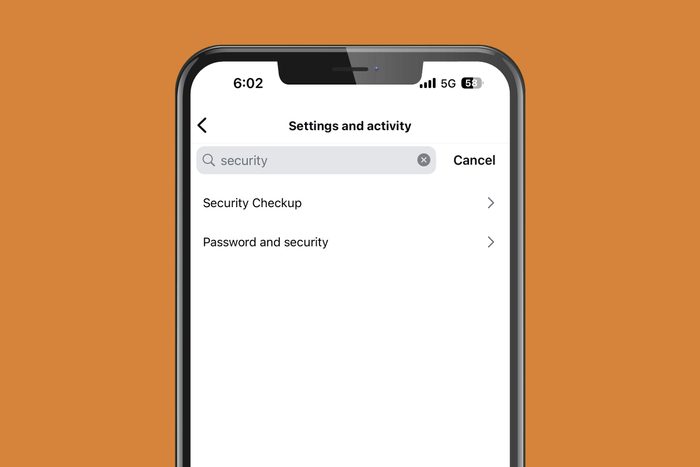
How to protect yourself from scammers on Instagram
While scammers have gotten more creative and high-tech over time, social media fraud prevention tips still go a long way. Moving forward, take these steps to protect yourself from scammers:
- Enable two-factor authentication. Block your account from hackers by requiring a code for login attempts from new devices. You can find this under “Settings and Privacy.”
- Get a security checkup. While you’re in your settings, tap the search bar and enter “security.” Click “Security Checkup,” and follow the prompts to ensure your account is as secure as possible.
- Change your password. Prevent scammers from doing more damage by locking your account with a new, stronger password.
- Make your account private. If you have yet to go private, take this step to reduce the risk of impersonation attempts. This limits access to information about you, as well as to your personal photos.
- Always ignore unsolicited communications from strangers. Don’t even read the message. Giving into curiosity is a gateway to being scammed.
Fake Instagram accounts are getting more sophisticated by the day, but staying one step ahead is possible. By learning how to spot fake profiles, understanding the tactics behind Instagram scam accounts and reporting suspicious behavior, you can help protect yourself—and others—from social media fraud. When in doubt, trust your instincts, do your research, and remember: If something feels off, it probably is.
About the experts
|
Why trust us
Reader’s Digest has published hundreds of articles on personal technology, arming readers with the knowledge to protect themselves against cybersecurity threats and internet scams as well as revealing the best tips, tricks and shortcuts for computers, cellphones, apps, texting, social media and more. For this piece on fake Instagram accounts, Alina Bradford tapped her experience as a journalist to ensure that all information is accurate and offers the best possible advice to readers. We rely on credentialed experts with personal experience and know-how as well as primary sources including tech companies, professional organizations and academic institutions. We verify all facts and data and revisit them over time to ensure they remain accurate and up to date. Read more about our team, our contributors and our editorial policies.
Sources:
- Caroline Wong, director of cybersecurity at Teradata; interviewed, April 2025
- Mason Wilder, CFE, certified fraud examiner and research director for the Association of Certified Fraud Examiners; interviewed, April 2025
- Scott Schober, CEO of tech security firm Berkeley Varitronics Systems; interviewed, April 2025
- DemandSage: “Instagram Statistics”
- Fortune: “Brad Pitt Slams ‘Awful’ AI Scammers Who Faked Relationship to Convince French Woman to Send Them $855,000”
- Instagram: “Help Center”
- Statista: “Share of Instagram Influencers Involved in Fraud Worldwide from 2022-2023, by Number of Followers”



















